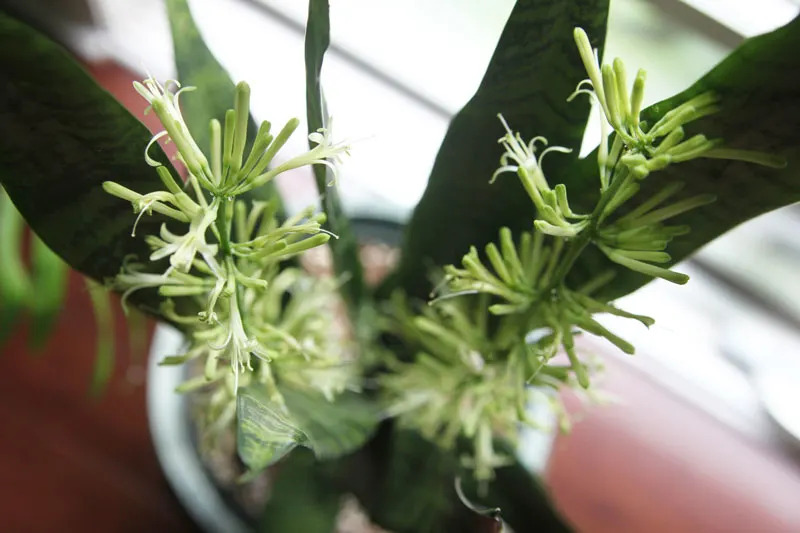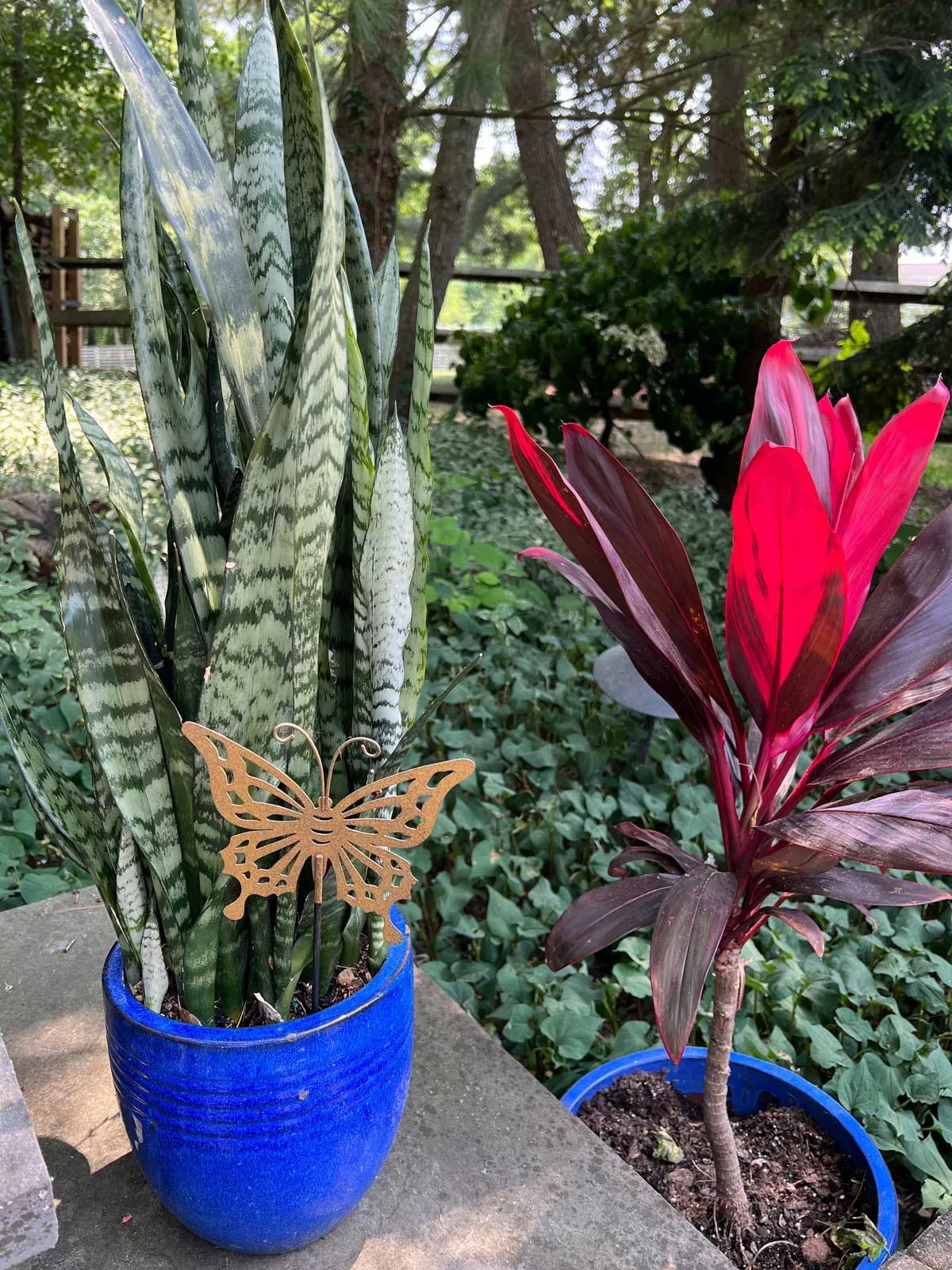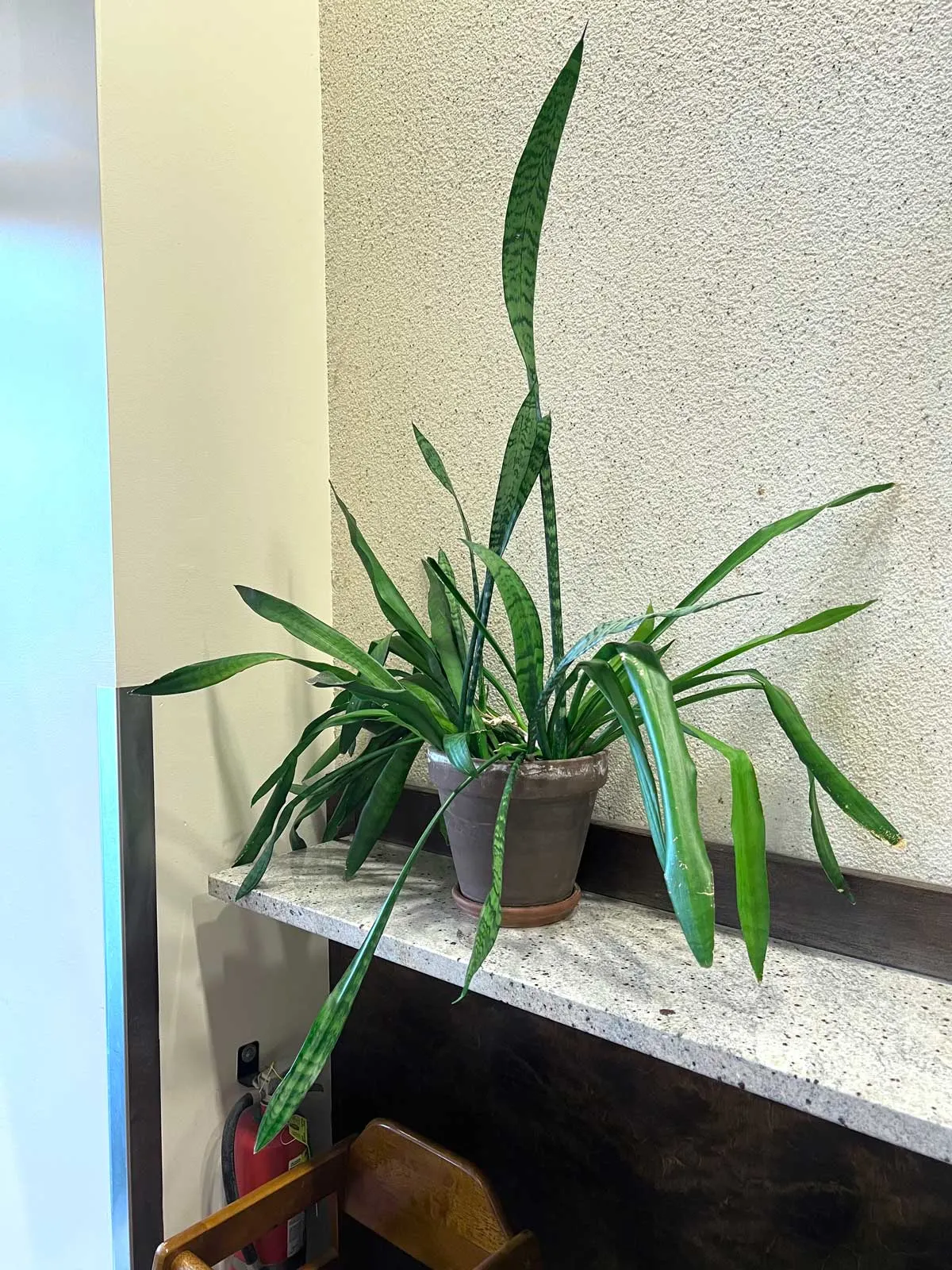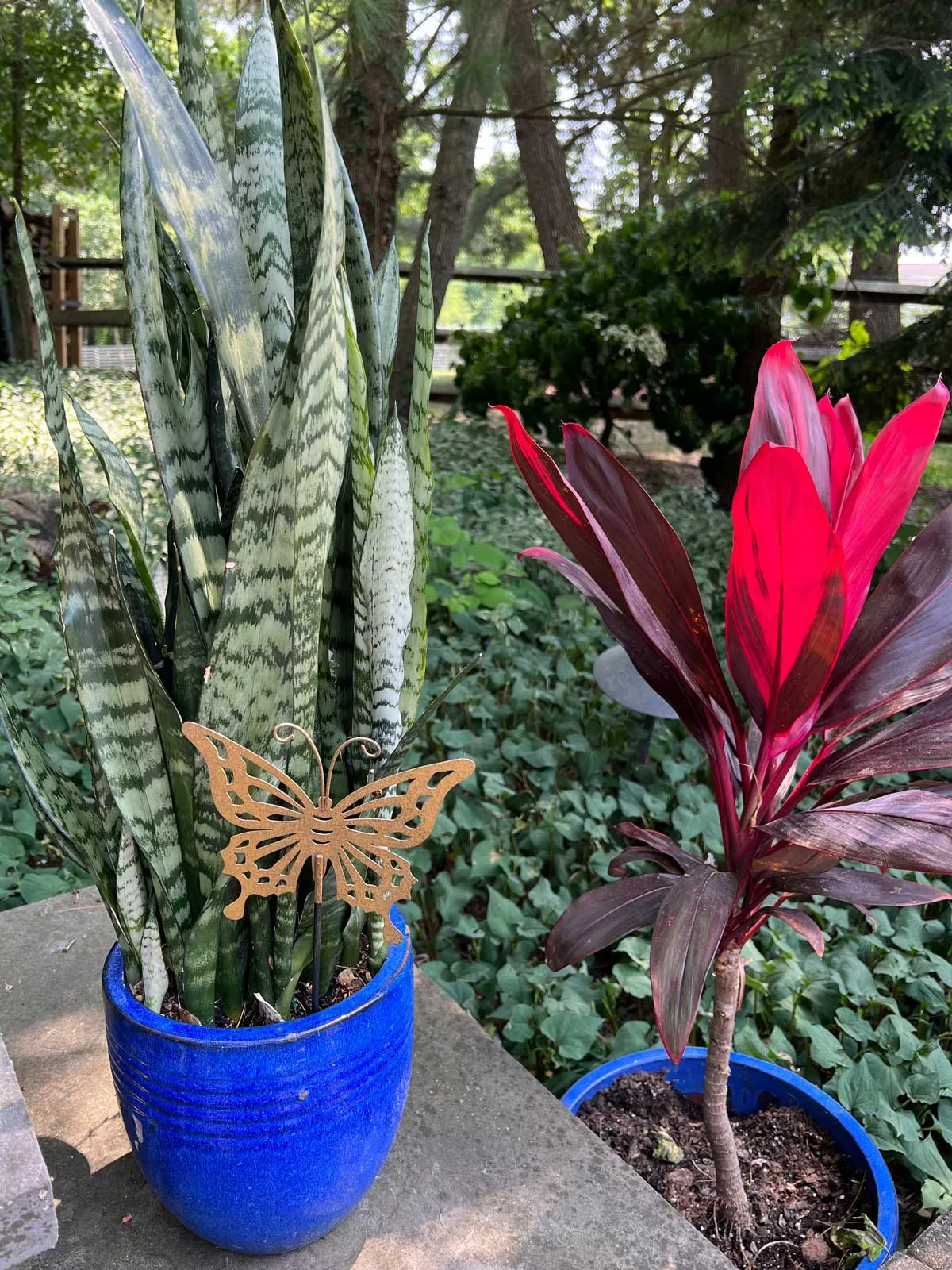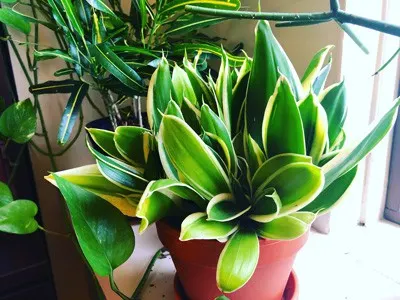Some of the links in this post may be affiliate links.
Do snake plants like to be misted? The answer is that it is 100% not necessary. In fact, it can even be detrimental, so keep reading to learn why. Snake plants truly are one of the most low maintenance of indoor plants, so you should treat them that way.
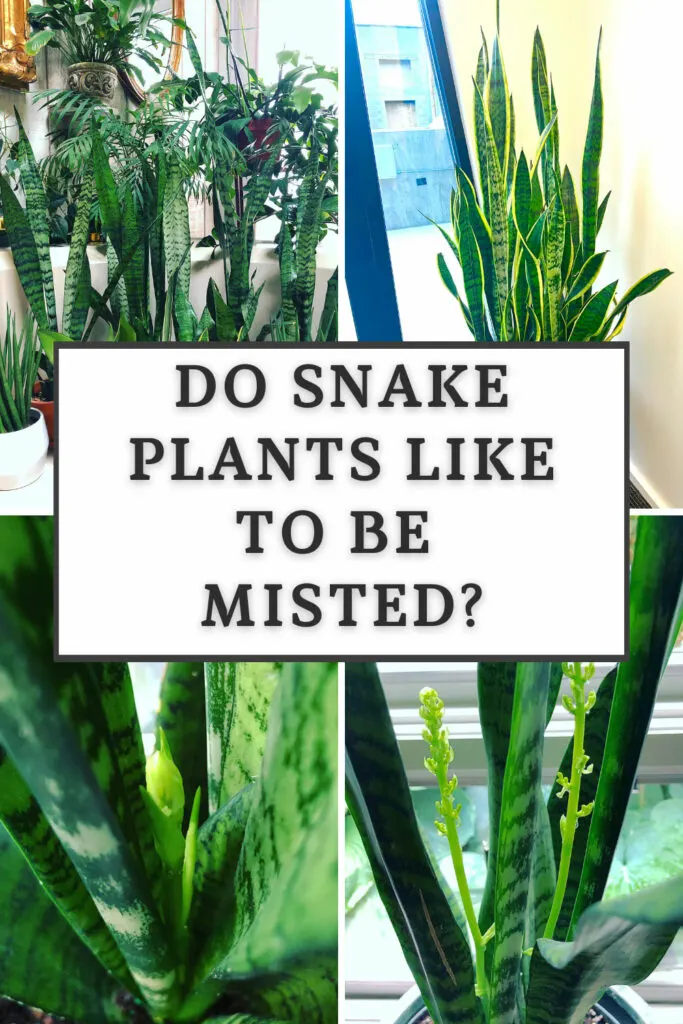
3 Reasons Why You Don’t Need to Mist Snake Plants
Many of the snake plant varieties that we grow indoors are derived from Dracaena trifasciata (previously known as Sansevieria trifasciata). There are other species as well, and these tips apply to all of them.
1. Average relative humidity indoors is just fine.
I’ve been growing snake plants for years, and I will tell you first hand that it is simply not necessary to mist your snake plants.
First of all, misting (contrary to popular belief) does NOT even increase the humidity of your air anyway. It simply wets the leaves of your plant and has virtually zero impact on the amount of moisture of your air.
If you don’t believe me, simply use a hygrometer to read the relative humidity of your air. You will see that it will virtually not change at all after misting your plants.
Even in the winter months, when our homes are plagued with low humidity, you don’t need to worry about increasing humidity. If you are growing your snake plants along with other plants that do appreciate higher humidity, you can certainly run a humidifier.
But don’t do it just for the snake plants because average humidity levels inside of the typical home work just fine.
Snake plants, also known as mother-in-law’s tongue, have very thick, succulent leaves. As a general rule of thumb, plants with very thick leaves do just fine with low humidity.
This is why snake plants, Hoyas, and other plants with succulent leaves are well adapted to growing indoors. Plants that have thinner leaves, like ferns, tend to need a higher moisture level in the air in order to look their best.
2. Misting too much can lead to crown rot
If you overdo it with your mister, water droplets can run down the leaves of your snake plant and collect in the crown of your plant. If you have water sitting at the base of the plant for too long, it can even lead to crown rot.
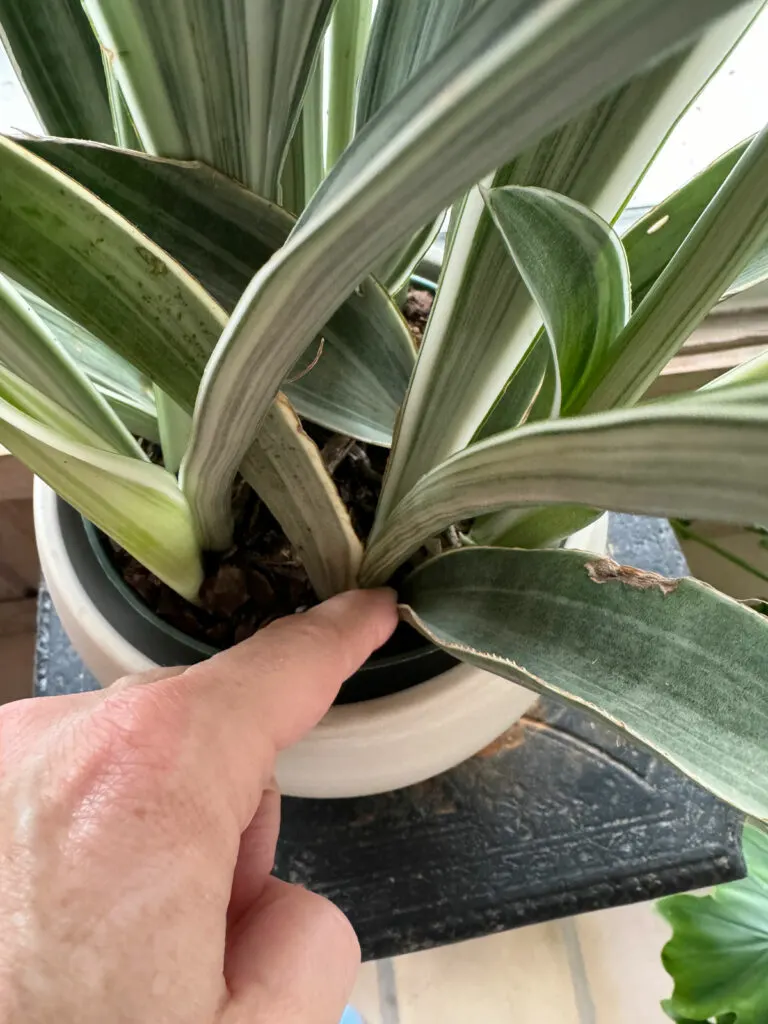
3. Misting too much can cause fungal infections
Lastly, if you overdo misting, it can even lead to a fungal infection or even bacterial infection, particularly with poor air circulation like most indoor locations have. We don’t have the benefit of wind indoors in order to move the air and dry things out.
So remember, less is more. Put down that mister because it is not needed at all for snake plants.
SHOULD YOU EVER MIST YOUR SNAKE PLANTS?
You can, but not for the reasons that you probably thought of.
The only time I would recommend using your spray bottle is if you want to clean your plant’s long, sword-like leaves. Simply mist the leaves and then you can wipe them down with a paper towel to remove any accumulated dust. You can also just simply use a damp cloth.
Cleaning your plant this way will help maintain healthy leaves.
Misting does help to deter spider mites, but these plants usually aren’t plagued by those pests.
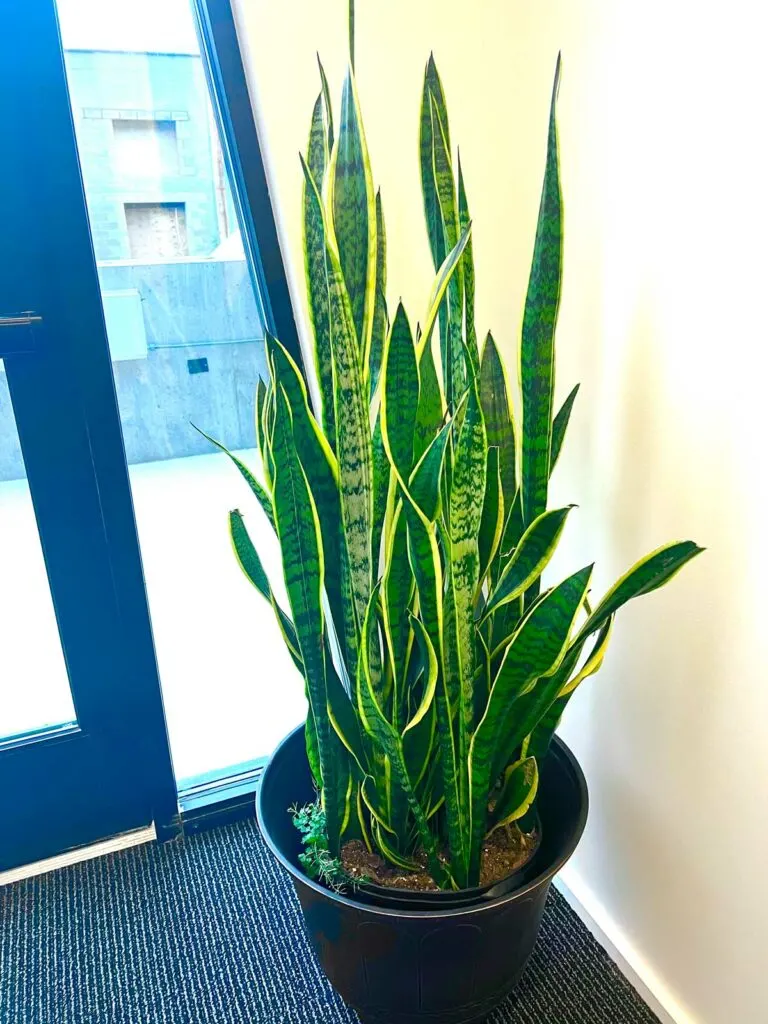
If your snake plants are struggling, it is certainly not because of whether you are misting or not. These are among the most forgiving of indoor houseplants, but there are a lot of common, snake plant problems that you may experience.
Check out my blog post on common snake plant problems and questions for more details, but throughout my time helping people with these plants, the most common reasons people fail with growing nice specimens are due to:
- Growing snake plants in lower light. They can take months to show distress from being grown in a lower amount of light, but eventually they will grow weak, floppy, droopy leaves in these conditions. These plants are touted as low light plants, but they will greatly benefit from a few hours of direct sunlight indoors. In fact, in most cases, it is very difficult to overdo it with too much light for these plants indoors. Higher levels of natural light will result in sturdier, healthier leaves over time. If you have only indirect light (no sun) indoors, that’s fine too, but keep your plant immediately in front of a window for best results.
- Improper potting soil moisture levels. This can result from not watering thoroughly, keeping your potting mix too dry or too wet for extended periods of time, allowing your plant to sit in excess water, and more. Growing your plant in a pot with no drainage hole can be particularly risky. Extremes in soil moisture can cause anything from yellow leaves to root rot and everything in between.
- Following a strict watering schedule and not feeling the potting mix to see if your plant needs water or not.
- Using the wrong type of pot for your environment, and also using the wrong pot size.
If you’ve enjoyed this post, you may also enjoy my other posts on snake plants:
How to propagate snake plants using leaf cuttings.
How to grow snake plants in water permanently.
How to repot a snake plant with the best type of soil.


